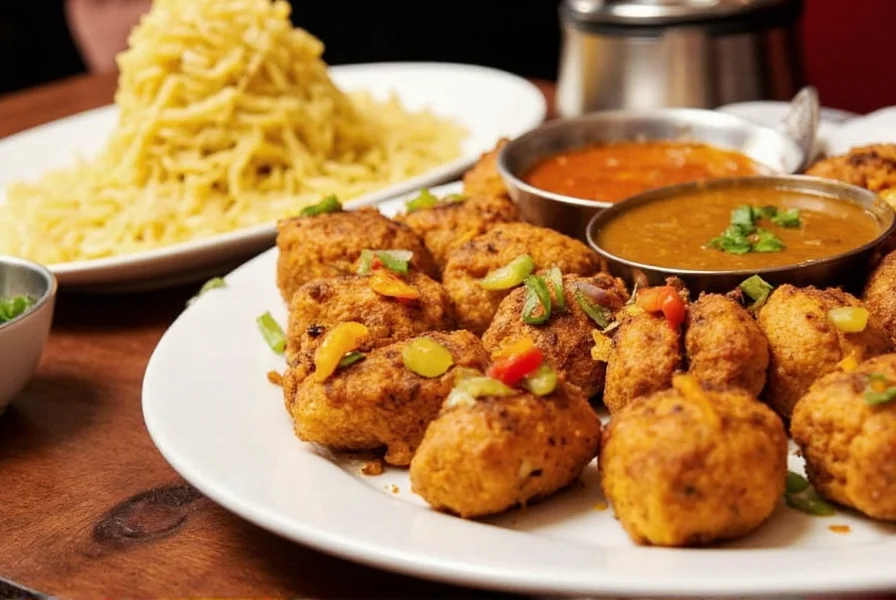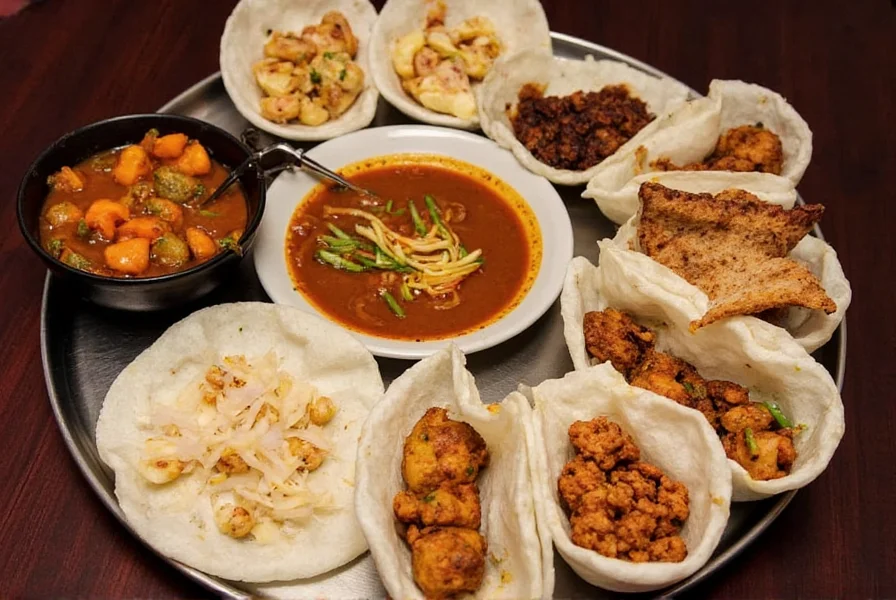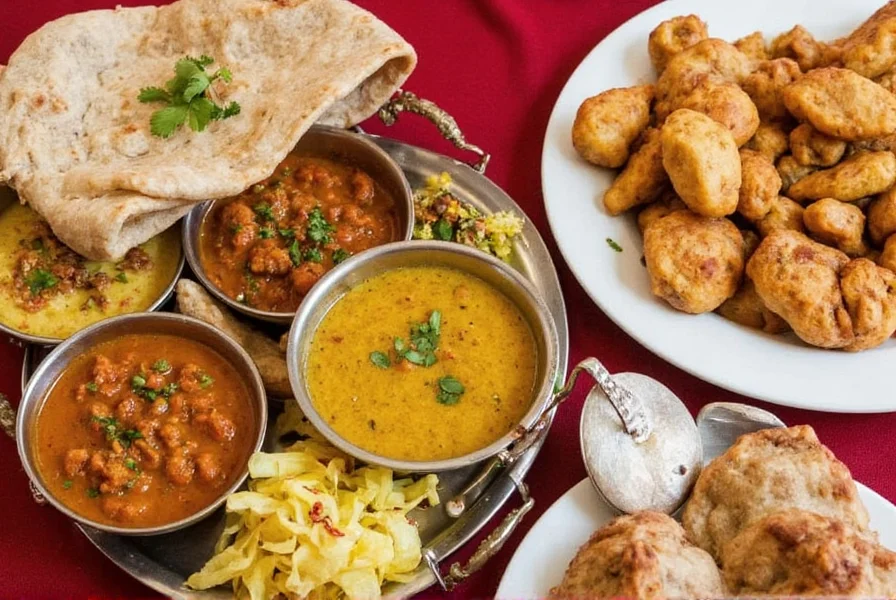When exploring Indian restaurants, you're encountering one of the world's most diverse culinary traditions. Unlike many global cuisines that maintain consistent characteristics across regions, Indian food varies dramatically from one part of the country to another—creating distinct restaurant experiences based on regional specialties. This diversity explains why no single "Indian restaurant" menu exists, but rather multiple culinary traditions under one umbrella.
The Regional Diversity Behind Indian Restaurant Menus
Understanding regional differences is essential for navigating Indian restaurant menus. The Indian subcontinent contains at least eight major culinary regions, each with distinctive ingredients, cooking methods, and flavor profiles:
| Region | Signature Dishes | Key Characteristics |
|---|---|---|
| North India | Butter chicken, naan, tandoori meats | Creamy sauces, tandoor oven cooking, wheat-based breads |
| South India | Dosas, idlis, sambar | Rice-based, coconut-heavy, fermented batters, tangy flavors |
| Gujarat | Dhokla, thepla, undhiyu | Distinctly vegetarian, sweet-savory balance, minimal spices |
| Bengal | Roshogolla, macher jhol, shorshe ilish | Fish-centric, mustard oil, subtle sweetness, five-spice blends |
When searching for authentic Indian restaurant experiences, look for establishments that specialize in specific regional cuisines rather than generic "Indian" menus. Restaurants focusing on particular regions typically demonstrate greater culinary expertise and authenticity in their preparations.
Types of Indian Dining Establishments Worldwide
Indian restaurants have evolved into several distinct formats depending on location and target audience:
- Traditional Regional Specialists - Focus exclusively on one Indian region's cuisine (e.g., Punjabi, Kerala, or Bengali restaurants)
- Contemporary Indian Fusion - Blend traditional techniques with global ingredients and presentation styles
- Street Food Concepts - Replicate India's vibrant street food culture with chaat, pani puri, and kebabs
- Vegetarian-Focused Establishments - Cater to India's strong vegetarian tradition with extensive plant-based menus
- High-End Indian Fine Dining - Feature elevated presentations and premium ingredients while maintaining culinary authenticity
Understanding these categories helps set appropriate expectations when selecting where to dine. For example, a street food concept restaurant will offer a casual atmosphere with small plates meant for sharing, while fine dining establishments provide multi-course experiences with wine pairings.

Decoding Indian Restaurant Menus: What to Look For
Navigating an authentic Indian restaurant menu requires understanding key sections and terminology. Most comprehensive menus organize dishes by:
- Breads (Roti/Naan) - From plain chapati to stuffed parathas and tandoor-baked naan varieties
- Starters (Pakoras, Samosas, Kebabs) - Often include regional specialties beyond generic appetizers
- Main Curries - Typically separated by protein type (chicken, lamb, fish, paneer, vegetable)
- Rice Preparations - Including biryanis, pulaos, and plain steamed options
- Accompaniments - Raita (yogurt sauce), pickles, chutneys, and salads
When examining menus at Indian restaurants, watch for regional indicators like "Hyderabadi," "Kashmiri," or "Chettinad" which signal specific cooking styles. Menus from authentic establishments often explain regional differences rather than presenting a homogenized "Indian" experience.
Vegetarian Traditions in Indian Restaurant Culture
One distinctive feature of Indian restaurants is their extensive vegetarian offerings, reflecting India's culinary heritage where vegetarianism has deep cultural and religious roots. Approximately 70% of traditional Indian restaurant menus feature vegetarian dishes as the primary focus rather than afterthoughts.
Authentic Indian restaurants typically categorize vegetarian dishes separately from non-vegetarian options, often using a green dot symbol for vegetarian items and red for non-vegetarian—a practice originating in India to help diners quickly identify suitable options. When exploring vegetarian options at Indian restaurants, look for regional specialties like:
- Gujarati thalis with multiple small vegetarian dishes
- Punjabi paneer preparations (Indian cottage cheese)
- South Indian vegetable stews (kootu) and lentil dishes (sambar)
- Rajasthani specialties like dal baati churma

Global Adaptations of Indian Restaurant Menus
Indian restaurants worldwide have adapted their offerings based on local preferences while maintaining culinary integrity. Understanding these adaptations helps set appropriate expectations:
- UK-Influenced Indian Restaurants - Feature "balti" curries and adapted dishes like chicken tikka masala
- North American Indian Restaurants - Often feature milder spice levels and larger portion sizes
- Middle Eastern Indian Establishments - Incorporate more lamb dishes and rice preparations
- Southeast Asian Indian Restaurants - Blend flavors with local ingredients like tamarind and coconut
When searching for authentic Indian restaurant experiences abroad, look for menus that maintain regional specificity rather than generic "Indian" dishes. Restaurants that explain the origins of their dishes and cooking techniques typically offer more genuine culinary experiences.
Practical Tips for First-Time Visitors to Indian Restaurants
For those new to Indian restaurant dining, these practical suggestions enhance the experience:
- Start with mild dishes if unfamiliar with spice levels—"mild" in Indian restaurants often equals medium in other cuisines
- Order multiple small dishes to share rather than individual entrees for a more authentic experience
- Ask about regional specialties the chef recommends that day
- Understand that "curry" is a Western term—Indian menus typically specify dish names rather than using this generic label
- Don't skip the bread selection—different breads complement different dishes
- Consider a thali (platter with multiple small dishes) for the most comprehensive regional tasting experience
When exploring Indian restaurants, remember that the best establishments take pride in explaining their regional specialties and cooking techniques. Staff at authentic venues should be knowledgeable about ingredient origins, preparation methods, and regional significance of dishes rather than providing generic descriptions.
Frequently Asked Questions
What's the difference between North Indian and South Indian restaurants?
North Indian restaurants typically feature tandoor-cooked breads like naan, creamy tomato-based sauces, and meat-heavy dishes reflecting Mughlai influences. South Indian restaurants focus on rice-based dishes, fermented batters for dosas and idlis, coconut-based curries, and tangy sambar lentil stews. The spice profiles differ significantly, with South Indian cuisine using more mustard seeds, curry leaves, and tamarind.
How can I identify an authentic Indian restaurant?
Authentic Indian restaurants typically specialize in specific regional cuisines rather than offering a generic "Indian" menu. They'll have staff knowledgeable about regional cooking techniques, use traditional preparation methods like tandoor ovens, and feature dishes with specific regional names rather than Westernized terms. Menus often explain the origins of dishes, and vegetarian options comprise a significant portion of the menu reflecting Indian food culture.
Why are many Indian restaurant dishes vegetarian?
Indian cuisine has deep-rooted vegetarian traditions stemming from religious and cultural practices across Hinduism, Jainism, and Buddhism. Approximately 30-40% of India's population follows vegetarian diets, making vegetarian cooking a sophisticated culinary tradition rather than an afterthought. Authentic Indian restaurants reflect this heritage with extensive vegetarian menus featuring creative preparations of lentils, vegetables, dairy, and grains that have evolved over centuries.
What should I order for my first visit to an Indian restaurant?
For your first authentic Indian restaurant experience, consider ordering a combination of naan or roti breads, a mild vegetable curry like palak paneer or chana masala, a tandoori chicken starter if you eat meat, and a lentil dish like dal tadka. A raita (yogurt sauce) helps balance spice levels. Alternatively, order a thali platter which includes multiple small dishes representing regional specialties, providing a comprehensive tasting experience of different flavors and textures.











 浙公网安备
33010002000092号
浙公网安备
33010002000092号 浙B2-20120091-4
浙B2-20120091-4